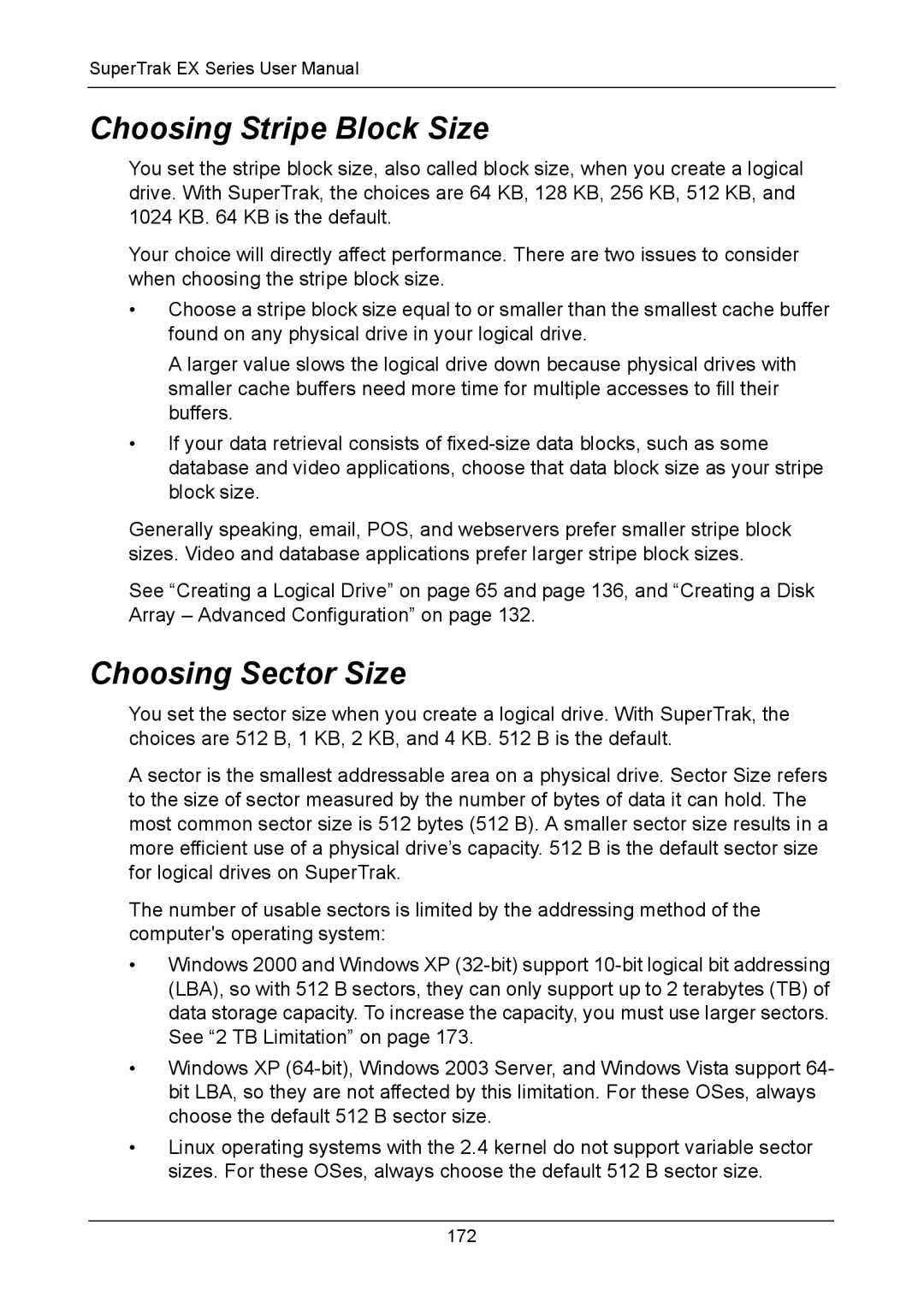
SuperTrak EX Series User Manual
Choosing Stripe Block Size
You set the stripe block size, also called block size, when you create a logical drive. With SuperTrak, the choices are 64 KB, 128 KB, 256 KB, 512 KB, and 1024 KB. 64 KB is the default.
Your choice will directly affect performance. There are two issues to consider when choosing the stripe block size.
•Choose a stripe block size equal to or smaller than the smallest cache buffer found on any physical drive in your logical drive.
A larger value slows the logical drive down because physical drives with smaller cache buffers need more time for multiple accesses to fill their buffers.
•If your data retrieval consists of
Generally speaking, email, POS, and webservers prefer smaller stripe block sizes. Video and database applications prefer larger stripe block sizes.
See “Creating a Logical Drive” on page 65 and page 136, and “Creating a Disk Array – Advanced Configuration” on page 132.
Choosing Sector Size
You set the sector size when you create a logical drive. With SuperTrak, the choices are 512 B, 1 KB, 2 KB, and 4 KB. 512 B is the default.
A sector is the smallest addressable area on a physical drive. Sector Size refers to the size of sector measured by the number of bytes of data it can hold. The most common sector size is 512 bytes (512 B). A smaller sector size results in a more efficient use of a physical drive’s capacity. 512 B is the default sector size for logical drives on SuperTrak.
The number of usable sectors is limited by the addressing method of the computer's operating system:
•Windows 2000 and Windows XP
•Windows XP
•Linux operating systems with the 2.4 kernel do not support variable sector sizes. For these OSes, always choose the default 512 B sector size.
172
